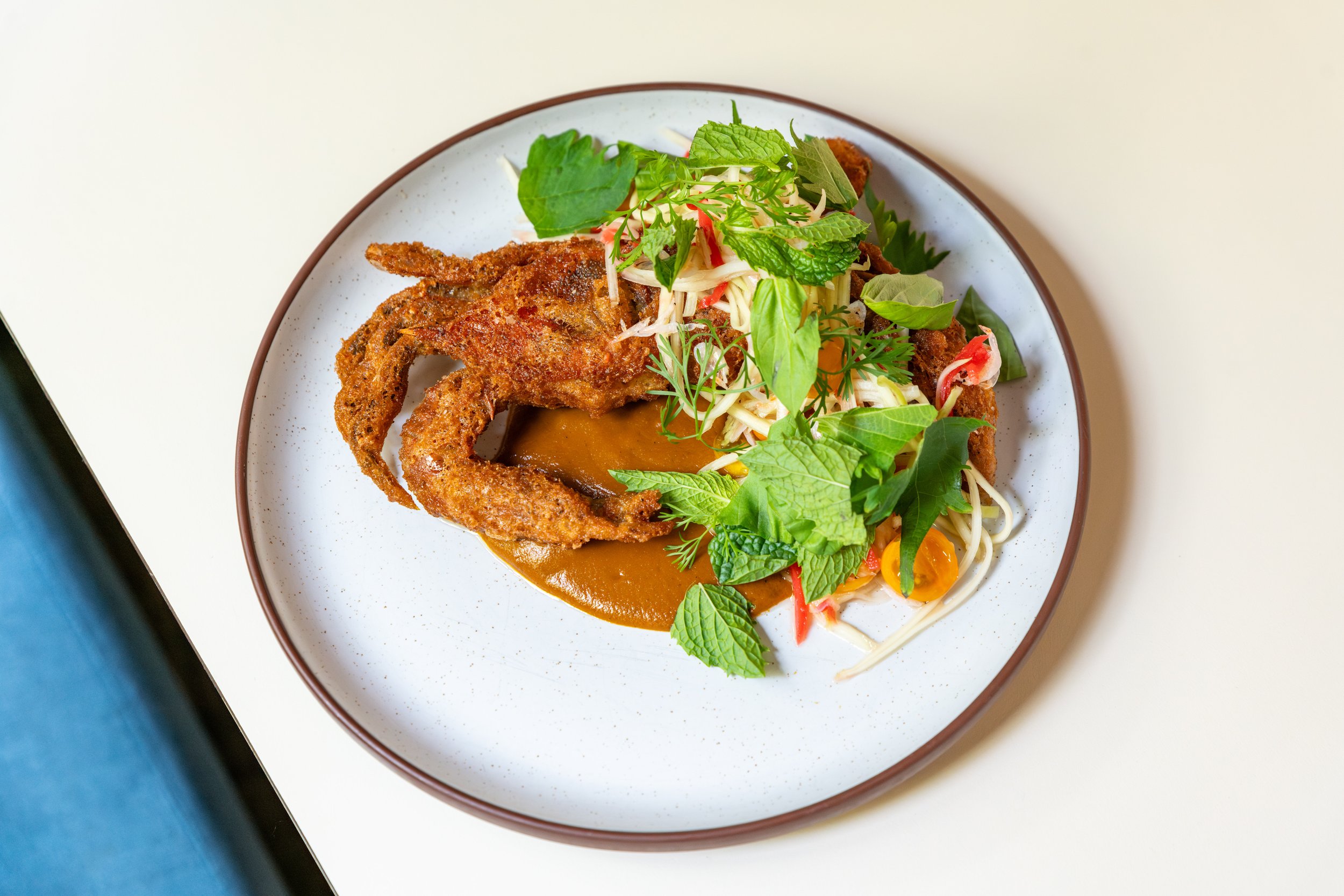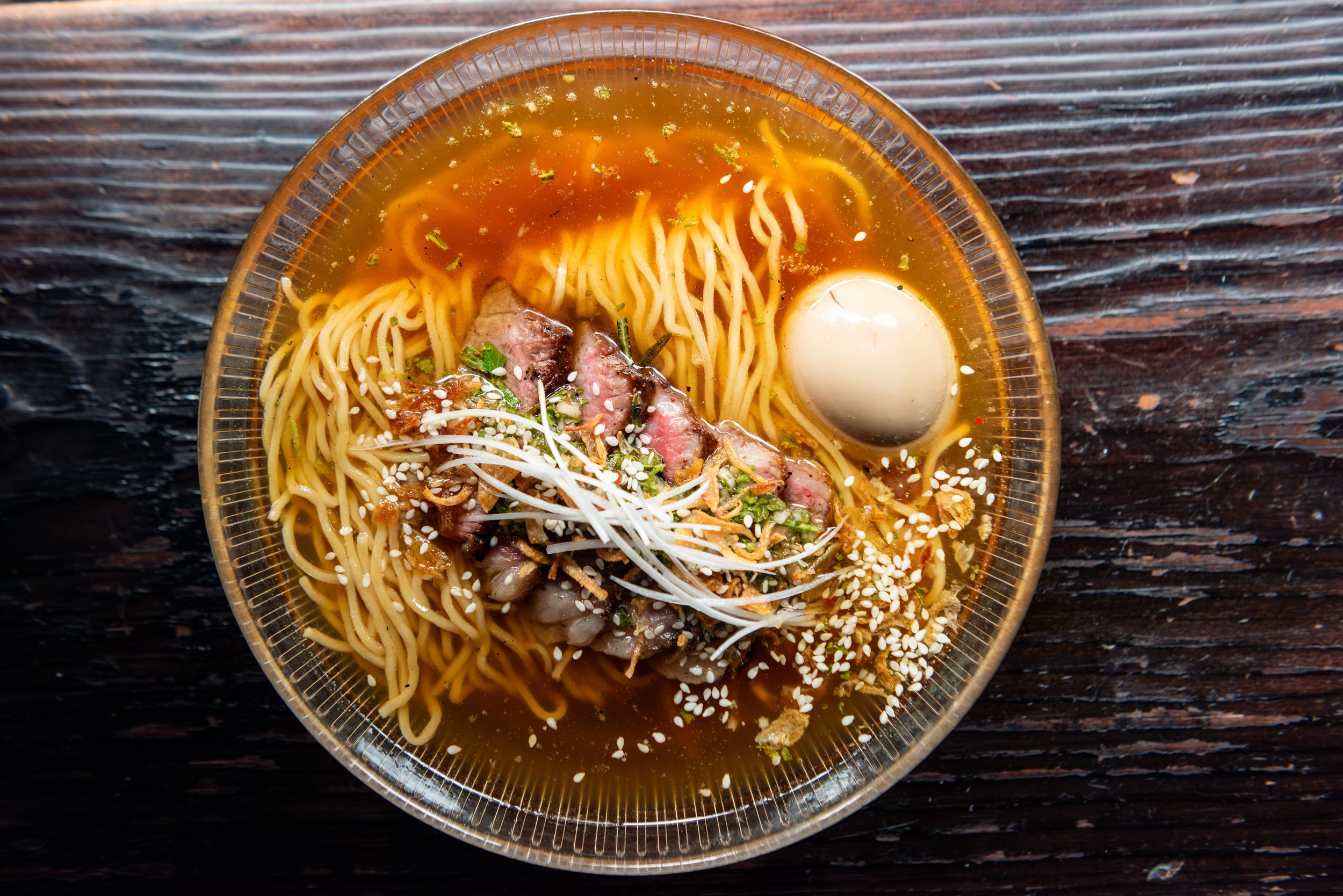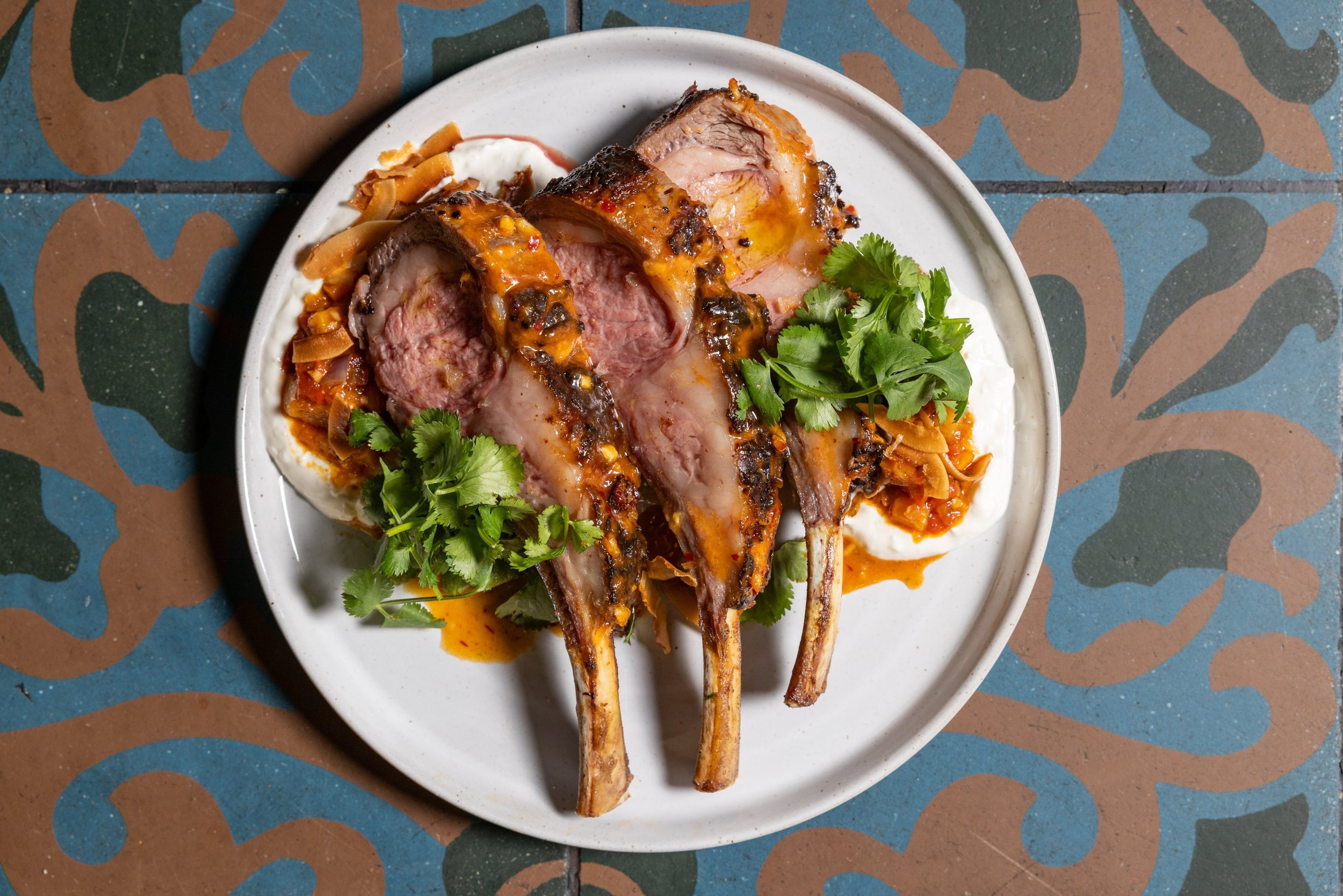Tried and True Chawanmushi
For Chef Bradley Nicholson, egg custard is a canvas for flavor at Lutie's Garden Restaurant.
photo: raeann serra
Certain dishes follow some chefs through their careers like a shadow. For some, this dish can be the bane of their existence; the thing that they spent days upon days prepping at their previous job ... only to move to a new restaurant and see the same dish on their station.
But for others, like Chef Bradley Nicholson of Lutie’s Garden Restaurant in Austin, they simply love it. “I’ve worked at four separate restaurants that all did a version of a chawanmushi,” Nicholson recalls. “It was interesting though, none of them were Japanese restaurants. They were inspired by the cuisine. The dish is so delicate, has such an amazing texture, and really just has a nice place on tasting menus.” His first experience was at Barley Swine, infused with barley tea and duck fat, topped with duck confit. “From the first time I ate that chawanmushi, it really blew my mind—the texture, the savoriness, how delicate it was—it really impressed me,” he says.
And when he moved from Austin to San Francisco to work at Benu, he was in charge of prepping Chef Corey Lee’s famous take on shark fin soup, this time in the form of a steamed egg custard with Chinese ham and chicken, faux shark fin, and truffle. Lastly, at San Francisco’s Birdsong, Nicholson helped develop a chawanmushi riff made with a smoked fish broth, grilled radish, and brown butter. What really stuck with Nicholson was how each version represented the chef and the concept. So when he was developing the à la carte and tasting menus for Lutie’s, he wanted to include a version of the dish that represented him. “For me, it was a cool canvas,” he says. “It’s a smaller format dish, with lots of big flavors packed in.” He fortified the creamy texture and comforting, oceanic flavors with opulent seafood for his take on a steamed egg custard.
Grits
In Texas, it’s not just barbecue that’s cooked low and slow: Nicholson cooks his grits with just water for about three hours in the oven, which develops a bit of crusty fond over its long bake. Once they’re out of the oven, Nicholson folds in the fond for a “really delicious toasted grit flavor.” Warmed with cream, butter, and crème fraîche for service, Nicholson scoops a layer of grits into the bottom of the bowl as a creamy, expectation-bending foundation.
Egg Custard
Like most chawanmushi, it all comes down to the dashi, and Nicholson utilizes kombu and katsuobushi along with the restaurant’s fish scraps and outdoor smoker to form the base of his dashi. When an order comes in, Nicholson blends whole eggs with the dashi, and seasons the mixture with their house-brewed soy sauce. The egg mixture gets poured over the grits, and is steamed in a combi-oven at 185 degrees Fahrenheit for about 10 minutes, until the custard is set, but still rich and creamy.
Seaweed Glaze
For an extra breath of smoky, sea-forward flavor, Nicholson pours a glaze of julienned wakame, kombu, and kuzu starch, seasoned with soy sauce, as well as a light layer of his house-smoked fish dashi over the custard. “The kuzu starch is thermostable, so it won’t break with high temperatures, and won’t seize in low temperatures,” says Nicholson. “We make it every day and it holds its texture all service long. It’s not creamy or gelatinous, but very, very silky.”
Golden King Crab
Nicholson tops the dish with a rotation of luxurious seafood, and in late summer, the set included a serving of golden king crab. After the whole crab is steamed and the meat is picked, Nicholson warms it up in butter that’s been infused with caramelized shrimp heads, chipotle peppers, garlic, and shallots to bring some Texas heat and even more decadence into the dish.







